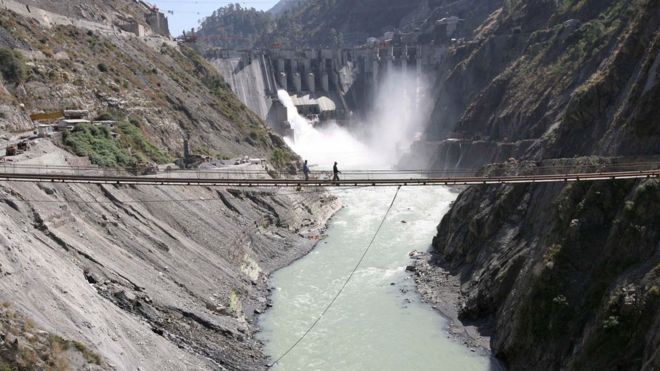Water fight could push India and Pakistan to the brink

About 4,500 years ago, the Indus Valley Civilization that had flourished in northern and western parts of the Indian subcontinent disappeared. Though the reasons for this are not conclusively known, experts believe a series of droughts, due to a lack of rainfall, led to the disappearance of the entire civilization. This is ironic, as the Indus Valley Civilization was undoubtedly the most advanced of its time in terms of urban development and water management, as archaeologists have discovered an extremely well-developed network of sewage drains and water channels all over the vast area where the civilization had prospered.
Almost four millennia later, the peoples occupying the land that was home to this civilization are facing another existential threat — and once again it is due to the scarcity of water and climate change. A lot has, of course, changed on the ground in the intervening years. The first big difference is the huge growth in population, as the region now supports nearly 1.7 billion people — almost one in four of Earth’s inhabitants — leading to a quantum jump in the consumption of water, which is also due to the changing lifestyles of the modern era.
On top of the increased consumption, global warming has led to erratic rainfall and the melting of the hundreds of glaciers that feed the rivers flowing through the basin, dramatically reducing the availability of fresh water in the entire Indian subcontinent. As a result, the three countries in the northern part of the subcontinent — Afghanistan, Pakistan and India — are now amongst the eight most water-stressed countries in the world.
For thousands of years, the region has depended on the Himalayan range for its water needs, alongside the seasonal monsoon rainfall that refreshes the water resources all over South and Southeast Asia. For South Asia, the Himalayas are the only permanent reservoir of water, ensuring year-round flow in dozens of rivers that provide water to the hundreds of millions of people living in the Indo-Gangetic basin. The Himalayas are home to the world’s second-largest freshwater resource, behind only the polar ice caps. Glaciers cover more than 30,000 square kilometers in the Himalayas and can supply over 8.6 million cubic meters of fresh water each year.
However, for almost two decades the weather has turned erratic, with rising temperatures, less rain during the monsoons, and much less snowfall during the winter months. This has led to a sustained retreat of the hundreds of glaciers and other high-altitude water bodies that, in turn, serve as reservoirs for the rivers that originate in the Himalayas.
Reports by various UN agencies suggest that South Asia, and notably India and Pakistan, could suffer from outright water scarcity — annual availability of less than 1,000 cubic meters per capita — by 2025, and gross water availability could fall as much as 37 percent by mid-century. In addition to the implications for drinking water and sanitation, this could considerably diminish crop yields in the region. A temperature increase of as little as 0.5 to 1.5 degrees Celsius might trim yield potentials for wheat and maize by 2 to 5 percent. For greater warming — above 2.5 C — the losses in non-irrigated wheat and rice yields in South Asia could cut net farm level revenues by 9 to 25 percent. Even under the most conservative climate change scenarios, net cereal production for South Asian countries is expected to tumble by at least 4 to 10 percent.
Courtesy : Arab News
